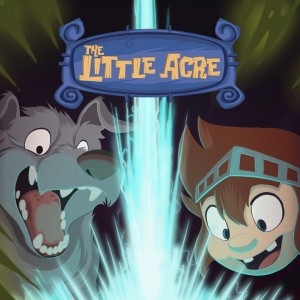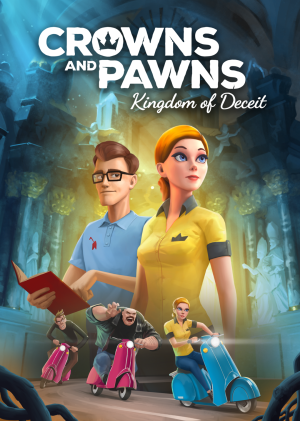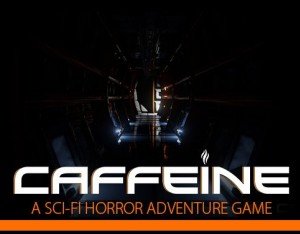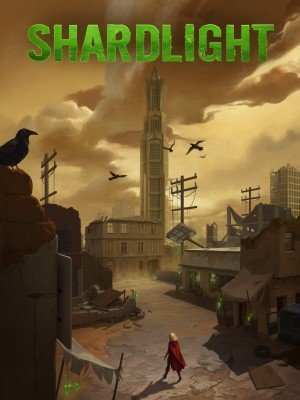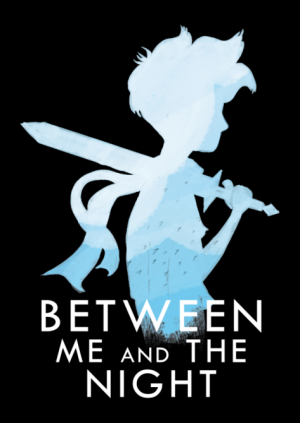AdventureX 2016 round-up: Part 1
Events Coverage
Reporting from E3, GDC, AdventureX, Gamescom and other gaming events around the world
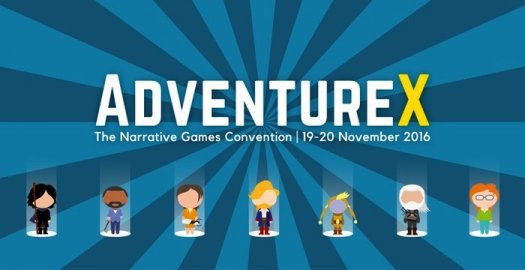
The weekend of November 19-20 marked this year's AdventureX, the world's only convention devoted to “narrative games”. Once again Goldsmith's University in South East London played host to this event. Gaming luminaries from around the world such as Charles Cecil and Rihanna Pratchett travelled in to talk about game-making, give interviews on their work and take part in panels. These sessions ranged from post mortems on games to the fight between gut and instinct in game design, to how to approach the press. The weekend capped off with a performance of the surreal live video game The Dark Room. As ever, it proved an eventful weekend for me. I transported a 10th anniversary cake for Wadjet Eye from the south coast to London, got trapped there by storm Angus (thanks to Alex Francois of The Slaughter for putting me up) and, having volunteered to play The Dark Room, found myself shouting "THERE'S NO PLACE LIKE LENINGRAD!" to a crowded lecture hall.
Attendance surpassed all expectations, with the first talk of the day going over capacity for the lecture hall. As the day progressed, it was even necessary to turn people away at the main entrance for a while. Fortunately for those who couldn't get into the lecture hall, a wide range of games were being exhibited. With so many titles available now or well on their way, the future of adventure gaming looks bright. The following round-up represents only half of the games I experienced first-hand, with the rest to come in Part 2 still ahead.
Her Majesty's SPIFFING
Hidden behind a bookcase in Buckingham Palace is mission control for HMSPIFFING. With other countries frowning on colonisation these days, the only place to rebuild the glory of the British empire is outer space. At the vanguard of this project is Captain Frank Lee English, along with his Welsh sidekick Aled Jones. Launching from the Elizabeth Tower in the Palace of Westminster on the Imperialise 2, they plan to boldly go where no Brit has gone before. But with antiquated technology and not enough proper milk for their tea, will this plucky pair achieve their goal?
 |
Billy Goat's William Barr |
This comedic game by Billy Goat Productions looks great and is packed full of humour. The player character, captain English, is a portly chap with a bushy moustache and wonderfully over-the-top British accent. Playing through the first part of the game, I got to explore the upper deck of the ship. The game is presented in third-person view, with multiple fixed camera angles for each location that change as you move around. Seeing sparks flying randomly and broken panels (including one marked "Wall 4") did not inspire confidence in the integrity of the ship. The main computer running the Flying Windows screen-saver and requiring floppy discs did nothing to dispel this impression. The dialogue is peppered with stereotype jokes of the United Kingdom, as well as amusing references to the film Moon and the TV series Father Ted. An accident with a cup of tea required an improvised repair to the controls. For once, my knowledge of older technology came in handy, as I was familiar with the tech on board.
More information can be found on the game’s website. You'll soon be able to check it out for yourselves, as Her Majesty's SPIFFING is due for cross-platform launch on December 7th.
The Little Acre
In 1950s Ireland, Aidan lived happily with his daughter Lily. But when his father goes missing, Aidan eagerly follows up the clues to his disappearance. Unfortunately for Aidan, this investigation leads to him activating a machine that transports him to another dimension and the world of Clonfira. There he meets characters that feed on “life essence”, taking on the characteristics of those they prey upon. Young Lily soon follows in her father’s footsteps, and the two must try to solve the mystery of how they reached this strange dimension and find their way home.
 |
Charles Cecil between Pewter Games' Christopher Conlan and Ben Clavin |
Although this is the debut title from Pewter Games, having Charles Cecil on board as Executive Producer is a good indication that The Little Acre has a lot of potential. The graphics are done in a beautiful hand-drawn style, smoothly blending semi-realistic backgrounds with some slightly cartoonish characters. Scenery ranges from the sweeping hills of rural Ireland to the ornate ruins and strange inhabitants of Clonfira. To distinguish between the two, the real world is presented purely in traditional side view whereas the alternate dimension is isometric. The game also has a full orchestral soundtrack and good voice acting. A standard point-and-click adventure for the most part, the demo did include a section where Aidan had to negotiate a narrow ledge. However, in keeping with the accessible family-friendly aim overall, it did not seem possible to suffer a game-ending fall from this situation.
More information can be found on the developer’s website. If you like what you see, the good news is that the full game is nearly here, with a current launch target of December 13th for PC, PS4 and Xbox One.
Lancelot’s Hangover
Sir Lancelot has been given a most unusual quest by God. Transported from his English home to the land of France, he has been tasked with finding the Holy Grail. Once he has located this mystic relic, he must fill it with booze, and then have a party worthy of the Almighty. The first step on his journey is the religious theme park, Redemption Land, watched over by Saint Stephane of Jobses. With the huge queues outside this popular resort, it seems even getting inside may prove beyond his knightly abilities.
 |
Jean-Baptiste de Clerfayt |
Having shown an early demo at last year’s AdventureX, Jean-Baptiste de Clerfayt’s game is now close to completion, including full voice acting. The game continues to be a highly politically incorrect experience. Lancelot walks around with a beer glass, clad solely in a chain coif and a pair of brightly coloured Speedos. The land he wanders and the characters he encounters are depicted in the style of medieval manuscripts, with music to match. The 2D graphics are presented in third-person perspective, though with some scrolling areas wider than a single screen. Control is performed with a standard point-and-click interface. Far from being a benevolent figure, God seems all too willing to zap Lancelot for the slightest offence, though it doesn’t seem to do him any lasting damage. With the introduction promising more stereotypes and irreverent behaviour, this is probably not a game for the easily offended, but rather for those who appreciate a more twisted sense of humour.
More information can be found on the official website. A free beta demo is available for download, and after final debugging the game should be released in the first quarter of 2017.
The Adventures of Bertram Fiddle: Episode 2 – A Bleaker Predicklement
Having failed to achieve famed adventurer status as planned, Bertram resigned himself to working in a soap factory. However, he was soon to gain fame of a most unwelcome sort. Accused of murder, Bertram finds himself cast into a bleak jail cell. Whilst he seeks the means to escape and clear his name, the sparse contents of his cell limit his options. Fortunately his faithful cyclopean manservant, Gavin, is still on the outside. Using his native wiles and prodigious strength, Gavin sets out to liberate his master.
 |
Rumpus Animation's Seb Burnett |
This follow-up from Rumpus Animation continues the story started in Episode 1, bringing this particular tale to its conclusion. Player feedback from the first episode showed Gavin was popular, but it was felt he had too little to do. That is rectified in this instalment, with Gavin able to range widely about town in the demo, whilst Bertram is stuck in a single small room. Both characters will be needed to succeed though, with control passed between them via the cell window. Control is handled through a standard point-and-click interface, with a third-person perspective as the character moves from scene to scene. The game features the same tongue-in-cheek humour and exaggerated cartoon graphics of its predecessor. Whilst not complete for the convention demo, the voice-work on display indicates the same high quality will be carried over for that too.
More information can be found on the series’ website. The game is expected to be released in February 2017.
The St. Christopher's School Lockdown
At St. Christopher's public school, catering to students in their late teens and early 20s, the students are staging a sit-down protest. Having falsely gained entry to the school as a student, Kayleigh now finds herself trapped with the others in the main building where they have set up. The school authorities are not going to take this demonstration lying down though, and have their own plans for making the students give up. As the situation escalates, Kayleigh must find a way to help her new-found friends. As she is neither the sister of a student nor a substitute teacher as she has claimed to be, this could prove tricky without blowing her cover.
 |
Classroom Graffiti's Roger Benoit and Laney Berry |
Having studied graphic design in the UK, Classroom Graffiti Productions’ project lead Laney Berry has applied her experience to the hand-drawn, gritty look and feel of the game. Whilst no date is specified, the setting has the feel of a traditional UK university in the early 1990s. The art style is similar to graphic novels of the era, presenting a realistic look in a watercolour style. The section I played took place in an office and adjoining common room area with standard point-and-click controls and third-person perspective. Locating a password for the computer was hampered by Kayleigh not knowing the name of the staff member likely to have it in their pigeon-hole. When the power was subsequently cut, I needed to improvise a light source. I was also treated to a demo of a card minigame based around voodoo adventure characters. This included the subtly renamed Leisure Suit Barry and Manbrush.
More information can be found on the developer’s website, where a playable demo is available. This first full-length adventure of what promises to be a series of games is due to arrive in March 2017.
Crowns and Pawns
Milda, a young woman living in Chicago, received some unexpected news. A grandfather that she barely remembers has passed away and left her his old house in central Europe. Travelling to her inheritance, she discovers an apparently run-down cottage. But there are indications that she is not the only recent visitor. The letter leaving her the house talked about the family being guardians of a great secret. Just what has Milda fallen into?
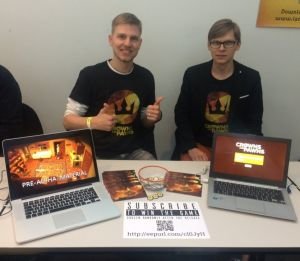 |
Tag of Joy's Sarunas Ledas and Zilvinas Ledas |
Tag of Joy’s Crowns and Pawns feels inspired by the Broken Sword series, with its storyline of an unsuspecting American thrown into an ancient European conspiracy. This is not entirely surprising, as some of the team were involved in the acclaimed freeware fan sequel Broken Sword 2.5: The Return of the Templars. The graphics use a detailed and realistic 3D rendering, with Milda appearing as a young blonde woman. The house is also rendered in great detail, with threadbare furniture and sunlight streaming through the windows. Partly funded by the Lithuanian Council for Culture, the developers are aiming for an early 2018 release, with the game being fully voiced between now and then.
More information can be found on the official website.
Code 7
As an accomplished hacker named Alex, your task is to help your partner Sam. The two of you have become separated, so the only help you can offer is in remotely hacking systems to aid Sam’s progress. Together you are investigating a space station that recently lost all communication. The problem is that you can't remember infiltrating the station or why you even wanted to do so in the first place. For that matter, though you apparently hired her for this task, you can't really recall Sam or your mission either. Perhaps if you can help Sam locate the information she needs, that will give some insight into your own problems.
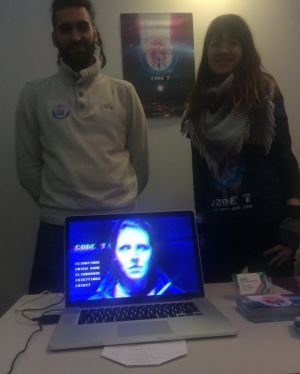 |
Goodwolf Studio's Zein Okko and Alison Yaeger |
Having originally been released as a freeware game put together in a week, Goodwolf Studio’s game has made huge strides since then. The top half of the display holds text of your conversations with Sam. Whilst her side of these dialogues is fully voiced to a good quality, yours is text-only, allegedly due to a faulty audio circuit. The bottom left corner includes a small video window showing a head-shot of Sam, with the rest being used for the interface. Commands are typed, though you are offered auto-complete of currently available commands to speed things along. Later you also get a wireframe map of the area around Sam, on which you can direct her using room references. Initial puzzles involve searching databases and other sources for command codes. Later on, a hacking minigame appears, in which you must trace a data flow, then intercept it to break security. The screen has a nice glitching effect, which enhances the feel of working in a system where you do not belong, though this can be turned off if players find it annoying.
More information can be found on the Code 7 website. The game is to be released in an episodic fashion, with the first free instalment, Episode 0, available now.
Genius & Evil
Ten-year-old Genius is a boy with plans for becoming a supervillain. As luck would have it, his house has been built on top of an old military bunker, home to the flying brain know as Evil. Together they create a time machine that they hope will enable them to see their evil plans to fruition. For their first test, they take a short hop back to try to prevent Genius's mother setting up a new website. With each change opening up new paths of history, the results may prove unpredictable.
 |
Experimental Game's Nico Nowarra |
With indie developer Experimental Game describing Genius & Evi as "the world's first interactive sitcom" with hopes for a TV and web series, they are definitely not lacking ambition. Add to that the plan to include 20% current news content and they definitely face a challenge. The presentation uses a third-person 3D view, with mostly fixed cameras, though there is the occasional follow-camera use in some areas. The graphics have the look of a modern cartoon series, featuring detailed 3D models depicting a sun-lit suburban American home. The bunker, containing Evil flying around in a military helmet, is in stark contrast to this cheery setting. Time travel is done via a grid map, with available nodes changing as a player's choices affect the direction of events. Within the grid nodes themselves, you play out that part of history with traditional dialogue and inventory puzzles. Some puzzles require you to solve other nodes to progress, whilst others offer multiple solutions that change the shape of the map.
There is currently no firm release target for the series’ debut 13-episode season, but more information can be found on the developer’s website under the “Projects” heading.
Dialogue: A Writer’s Story
Lucille is a writer in her mid-to-late 20s who has lived in her block of flats for some time. When a new resident named Adrian moves in, Lucille is one of the first to befriend him. Through their conversations, Lucille and Adrian find out more about each other, and over the course of the following year the two have a profound influence on each other’s lives.
 |
Tea Powered Games' Florencia Minuzze and Dustin Connor |
Many developers give dialogue only a minor role serving as exposition or a brief puzzle. For Tea-Powered Games, it is the sole purpose of the aptly-named Dialogue. The graphics feature bright stylised art, with fixed backgrounds and paper cut-out characters. This does not prevent characters from being expressive though, with the models changing to reflect a person’s mood. The gameplay is also pleasantly varied given the narrow focus. An opening scene played out like a standard dialogue, with an ongoing conversation occasionally interrupted by a list of choices for the player. A subsequent scene played out entirely differently. In this the conversation was represented as a grid-based map. You could pick out subjects from dialogue to pursue further and backtrack to earlier statements to explore different avenues of interaction. You could even open up new avenues of conversation by applying Lucille’s thoughts to the things being said. The whole experience is enhanced by good quality voice acting for all involved.
The game is available now from the developer’s website, though they are currently seeking to get Greenlit on Steam as well.
Antioch: Scarlet Bay
In the dark and isolated city of Antioch, another murder has taken place. For police detective Benedict, it was to be his last case before retirement. For detective Martin, it was to be his first day on the job. When the body was found at the sleazy Church View Hotel, it looked like it would be a standard case. But before the night is over, both will have delved deeply into a case unlike anything either of them had ever seen before.
 |
Mi-Clos Studio's Antioch: Scarlet Bay |
On the surface, Mi-Clos Studios’ game plays like a standard text adventure. The player is presented with text in a series of blocks, with stylised art presented for transitions between scenes. Most of the decisions that need to be made involve interacting with your partner on the case. The thing that sets Antioch apart from more traditional text-based adventures is that, whilst there is a single player option, that partner is intended to be another human being. This can either be a friend you have agreed to play with, or a stranger chosen at random from the player base. Co-operating or being antagonistic will produce different results, altering the course of investigation.
More information can be found on the official website. The game is currently on track for release in March 2017.
Thing-in-Itself
It was Immanuel Kant who first posited the concept of a thing-in-itself. The assertion was that we view objects based on both our past experiences and our current mood. The thing in itself remains unchanged but our perception of it alters as we ourselves change. Having had the idea explained to him by his girlfriend, one young man will soon get an object lesson in its application. A series of events seem to alter the world around him.
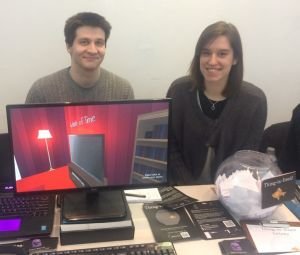 |
Party for Introverts' Arseniy Klishin and Laura Grey |
While the room where Party for Introverts’ game takes place is rendered in 3D, objects within it are entirely flat. This creates a surreal feel to proceedings that fits in with the idea of reality seeming to change with a person's mental state. The game is fully voiced to a good standard, with internal dialogue from the young man and conversations with his girlfriend. The altered perception comes through in both the room's lighting and object labels. For example, an ordinary TV becomes a "Waste of Time" when your mood sours. The game is presented in first-person view, with keyboard movement and mouse to look around and interact. In the opening scene that I played, interaction was limited to tidying up by picking items up (using left-click) and depositing them in appropriate places.
More information can be found on the developer’s website. Having been Greenlit on Steam, they aim to release the final version in January 2017.




